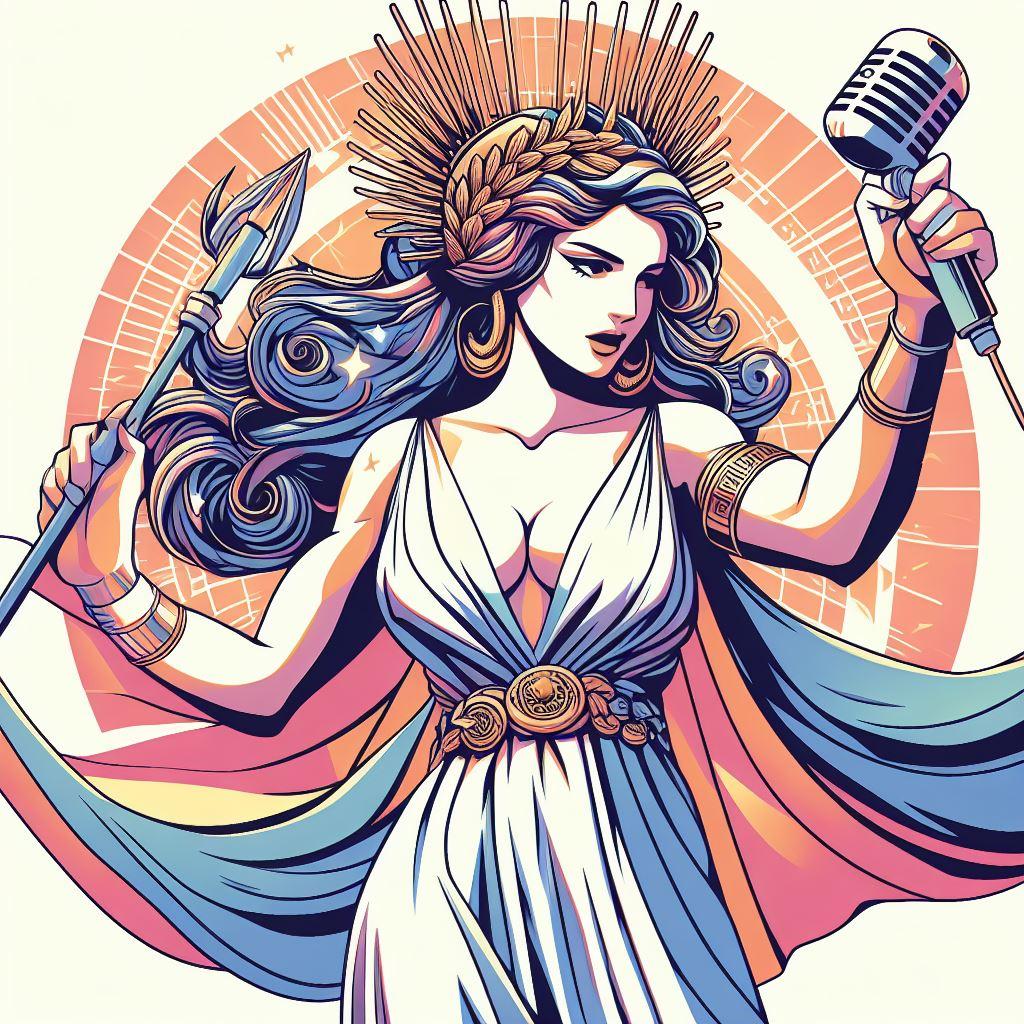Who is in Control?
AI and Folklore
Posted by Chris Sissons on Oct 18, 2023
AI and Folklore » Chris Sissons and Minerva
Having arrived at the Old Testament in my last post, I want to stay there for a while. When I started reading about AI, I soon began to think about idolatry. The Jewish and Islamic traditions are both definitely against idolatry. Other religions less so, eg Hinduism. Christianity falls somewhere in between and I’ll return to that later.
The second commandment in the Hebrew Scriptures states, “You shall not make yourself a carved image or any likeness of anything in heaven or on earth or in the waters under the earth; you shall not bow down to them or serve them”. (Exodus 20: 4,5)
This is a total ban on creating a likeness of anything alive or imaginary. Whilst many of the stories in the Old Testament revolve around people breaking this commandment, it is still one of the consistent marks of the Jewish religion. Note it includes representations of angels and indeed of God. It is also a ban on making a copy of anything and calling it God, even if you mean the God who created the commandment, cf the Golden Calf.
Islam has a similar prohibition and that has resulted in the beautiful patterns that are used in Islamic places of worship, writings, etc.
Christianity has a strong tradition of iconography. Here images of Jesus, Jesus and Mary, saints and even God are permitted. These are two-dimensional in the Orthodox tradition and Roman Catholics favour three-dimensional statues. From time to time, iconoclastic traditions emerge eg in the Middle East during the rise of Islam, which influenced the Orthodox traditions to a degree. And also the rise of Protestantism included iconoclastic destruction or defacement of statues.
So, what is the objection to images? Consider these words from Psalm 115: 4 - 8
Their idols are silver and gold,
the work of human hands.
They have mouths, but do not speak;
eyes, but do not see.
They have ears, but do not hear;
noses, but do not smell.
They have hands, but do not feel;
feet, but do not walk;
and they do not make a sound in their throat.
Those who make them become like them;
so do all who trust in them.
This is a fairly typical critique of idolatry. Notice, first this passage is atheistic. It exposes the idols of other religions as false. But notice the final two lines. Here we see the danger of idolatry, we become like them.
This religious tradition emphasises the danger of projecting sentience onto things that are not sentient. Idolatry is ascribing self-awareness to things that are not self-aware. This is something some people are able to exploit. So, who gets the offerings to the idol? It is one way in which rulers consolidate their rule. And yes, sometimes the rule is to worship them, eg Roman Emporers.
The Christian traditions that use images argue that icons point us towards God. They help with prayer by providing a focal point.
The point of this is not to argue for or against particular religious traditions but to point out the dangers of idolatry and how idols are used to manipulate populations. This is a warning about AI. It is far more complex than a statue and its workings are more mysterious. The danger is that we make a God of it and yet never ask who programmed it and how their prejudices and assumptions are somehow embedded in it. Look around the world today and ask who is in control.
This is the seventh in a series of posts about AI and Folklore. I define Folklore as inclusive of religious stories and some from modern popular culture. Minerva assists in all the posts, sometimes without attribution!
The first post in the series is Life with Minerva. The last post was Dirt and Breath and the next is On Loneliness and Electricity. If you press the button marked "Follow", you'll receive notice of new posts.
As always, please comment. As well as your insights into AI and Folklore, I'd appreciate suggestions of stories I might cover. These could be from folktales, myths, religious stories as well as general literature.
Minerva reckons she's an expert on idols, having been represented by many in the past. This is her take on what she might be like as a modern pop idol. Not quite as scary as some of her efforts (apart from the spear!)

Comments
Leave a comment.
Leave a comment.



 )
)